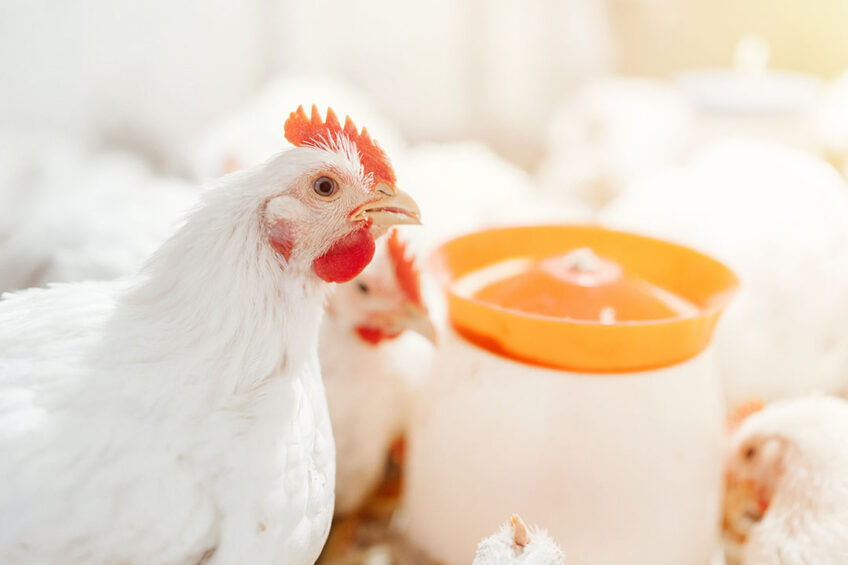Closing the creatine supply gap in poultry

With improved genetic potential and subsequent muscle growth, broilers have an increased and high creatine demand that is not always met. Adding a guanidinoacetic acid supplement to broiler feed closes the gap in creatine supply, thereby increasing the efficiency and effectiveness of nutrition and optimising production costs.
Modern broiler genetics show significant improvements compared to their predecessors more than 60 years ago. Research shows that since 1957 growth performance has improved incredibly, with increases in absolute broiler weight and muscles. In line with this muscle increase is the bird’s greater requirement for creatine. Given current growth levels in the industry, the creatine demand for broilers is considerable.
Only two thirds of the creatine requirement for maximum animal performance is supplied by the animal’s own synthesis. The remaining third needs to be supplemented via the feed, e.g. using guanidinoacetic acid (GAA). By day 35 of broiler growth the creatine supplement requirement can exceed 100 mg per day. The creatine level in muscles can be increased by GAA supplementation in the order of 10-20%, depending on the dosage.
Creatine metabolism
GAA improves growth performance through effective nutrient utilisation and it can spare dietary arginine and dietary energy. Creatine is synthesized in the animal in a process that begins in the kidneys and moves through the liver before it acts as the ‘battery cell’ of the animal in the muscles. There, creatine phosphate (Creatine P) helps to regenerate adenosine triphosphate (ATP) catalysed with the enzyme creatine kinase (CK) by transferring its phosphate group to adenosine diphosphate (ADP) in order to synthesize ATP. The creatine-phosphate (Creatine P) then acts as a second energy source at cellular level.
ATP is the universal cellular energy source and it has to be freely available to support many processes in the cell. One very important energy-demanding process in the cell is protein synthesis from amino acids. So, if ATP and Creatine P are not readily available this limits protein synthesis and consequently muscle growth. High serum concentrations of creatine can inhibit the de novo synthesis of GAA from arginine and glycine, known as AGAT-enzyme feedback repression.
This challenge can be overcome by supplementing GAA directly, by supplying the animal with sufficient creatine levels at all times. The benefits of including GAA in the feed are the same in broilers and in swine. Its main effects include an improvement in the feed conversion ratio (FCR) and carcass quality, along with an increase in body weight and health improvements.
Creatine sources
Although animal proteins provide a potential source of creatine, the available levels are minimal. For instance, meat and bone meal contains 208 ± 107 mg/kg of creatine. Plant protein contains no creatine at all. In contrast, a supplement, such as Guanamino by Evonik, contains 960,000 mg GAA/kg (equivalent to 1,074,774 mg creatine/kg). Producers also need to take into account the fact that creatine is not heat stable, so when feed is pelletized creatine will be destroyed, a factor that can be overcome by supplementing with GAA.













